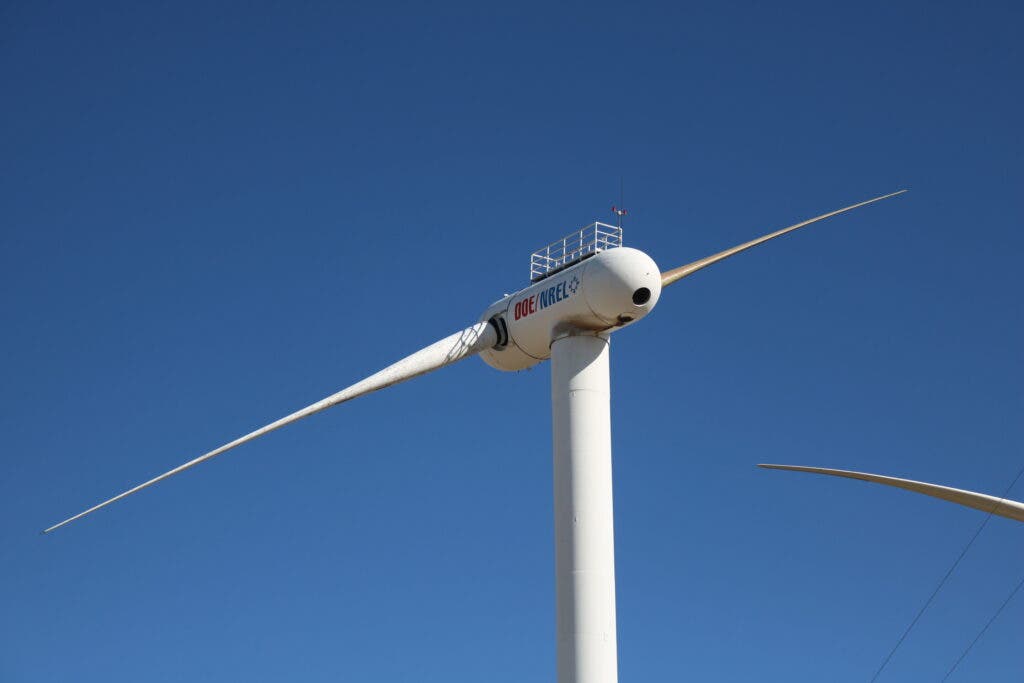A six-year-long research collaboration between several Universities in the US is paving the way toward lighter, cost-effective wind turbines that are more resilient to hurricane-like winds.

Wind turbines have consistently been increasing in size over the last few years, allowing each one to supply more and more power. But with this increase come some challenges, as well. Keeping a balance between the weight and strength of the turbine’s blades is one of the most important such challenges, especially in areas with powerful winds. These are the most productive areas for wind turbines, but also the most dangerous.
Traditionally, wind turbines face the incoming wind. Their blades must therefore be sufficiently stiff to not bend into and hit the tower that supports the turbine. A lot of material goes into making them sufficiently stiff, resulting in relatively thick, ponderous, and expensive blades. The current paper explains how palm trees can act as a source of inspiration for the design of lighter, more flexible, and less costly turbine blades that are also more resilient in the face of strong winds such as hurricane scenarios.
Bend not break
“We are very much bio-inspired by palm trees, which can survive these hurricane conditions,” said Lucy Pao, Palmer Endowed Chair in the Department of Electrical, Computer and Energy Engineering at the University of Colorado at Boulder, corresponding author of the paper.
“The blades are manufactured to be lightweight and very flexible, so they can align with the wind loads. That way, we can reduce the cost of the blades and bring down the cost of energy,” adds Mandar Phadnis, lead author and a graduate student in electrical, computer and energy engineering.
The main feature of the team’s design is that it involves the use of downwind rotors that face away from the wind. As such, even if the blades of these turbines bend under powerful winds, they do not risk hitting the tower. Because of this, the blades themselves can be lighter and made to bend in the face of strong winds instead of resisting them — much like the leaves of palm trees, according to the author.
The turbine, christened SUMR (Segmented Ultralight Morphing Rotor), is the product of a six-year collaboration between UC Boulder and members from the University of Virginia, the University of Texas at Dallas, the Colorado School of Mines, and the National Renewable Energy Laboratory. It is equipped with two lightweight blades and was tested for four years in real-world scenarios at the National Renewable Energy Laboratory’s (NREL) Flatirons Campus, just south of Boulder, Colorado.
The testing showed that the turbine behaved well and could function efficiently even during periods with strong wind gusts. It provided a constant and satisfactory output of power throughout all environmental conditions, according to the authors.
Part of its success lies in a new controller. Wind turbines have a hard time dealing with times when there is too much or too little wind. In the first case, a turbine can be pushed beyond its capacity, leading to a forced shut-down meant to prevent an overload. In the second, the turbine can’t produce a meaningful amount of power. The controller that the team designed and incorporated into their turbine monitors the performance of the turbine and adjusts its function to better improve performance. It tells the turbine to be more or less aggressive in power generation depending on environmental conditions.
In essence, this controller is a computer brain running several algorithms that coordinate the pitch of the turbine’s blades, the torque of its generator, how much power it generates to feed into the grid, and the control surfaces that ensure the turbine is always facing the direction of the wind.
The development of the SURM turbine is very welcome as climate change works to amplify the frequency and destructive power of hurricanes around the world. Although it is more important than ever that we scale up the use of clean energy technologies such as wind and solar power, the increase in freak weather events puts wind turbines at disproportionate risk. These turbines will not only help foster the development of wind power by allowing for cheaper and simpler to manufacture blades to be used on turbines, but it will also help safeguard these installations from incurring damage during violent storms.
Hurricane activity this year in the Atlantic is predicted to be above average, with NOAA’s Climate Prediction Center estimating up to six major hurricanes with winds of 111 mph or higher between June 1 and November 30.
The control algorithms that the researchers developed for SUMR can be used for traditional upwind turbines as well, the team explains, which are the dominant type of wind installation today. As such, the research has direct applicability today, and can provide tangible benefits even without a change in current infrastructure.
“The advantage of the downwind configuration, however, really comes about when you get to extreme scale turbines, and those are primarily for offshore,” said Pao.
The paper “On the Severity of Wind Turbine Generator Speed Peaksin Response to Particular Gusts” is available on the preprint server enrgXiv.






